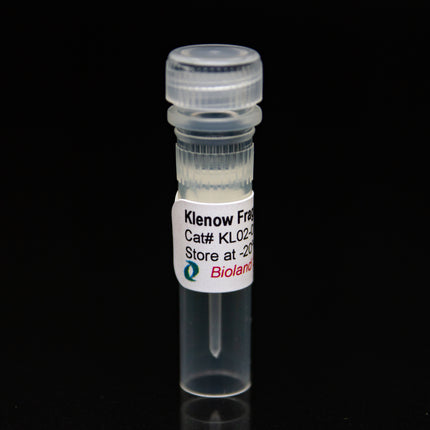Klenow Fragment (3'→5' exo-), (5U/ul, 500U)
SKU: KL02-01
Klenow Fragment (3'→5' exo-), (5U/ul, 500U)
DNA Pol I Large fragment (Klenow) was originally derived as a proteolytic product of E. coli DNA polymerase. It retains... Read more
$105.00
Free pickup in our shop(s)
- Shipped today? Order within:
Want a Bulk Order? Contact us!
Our team is available Monday through Friday from 9:00am-5:30pm PST.

